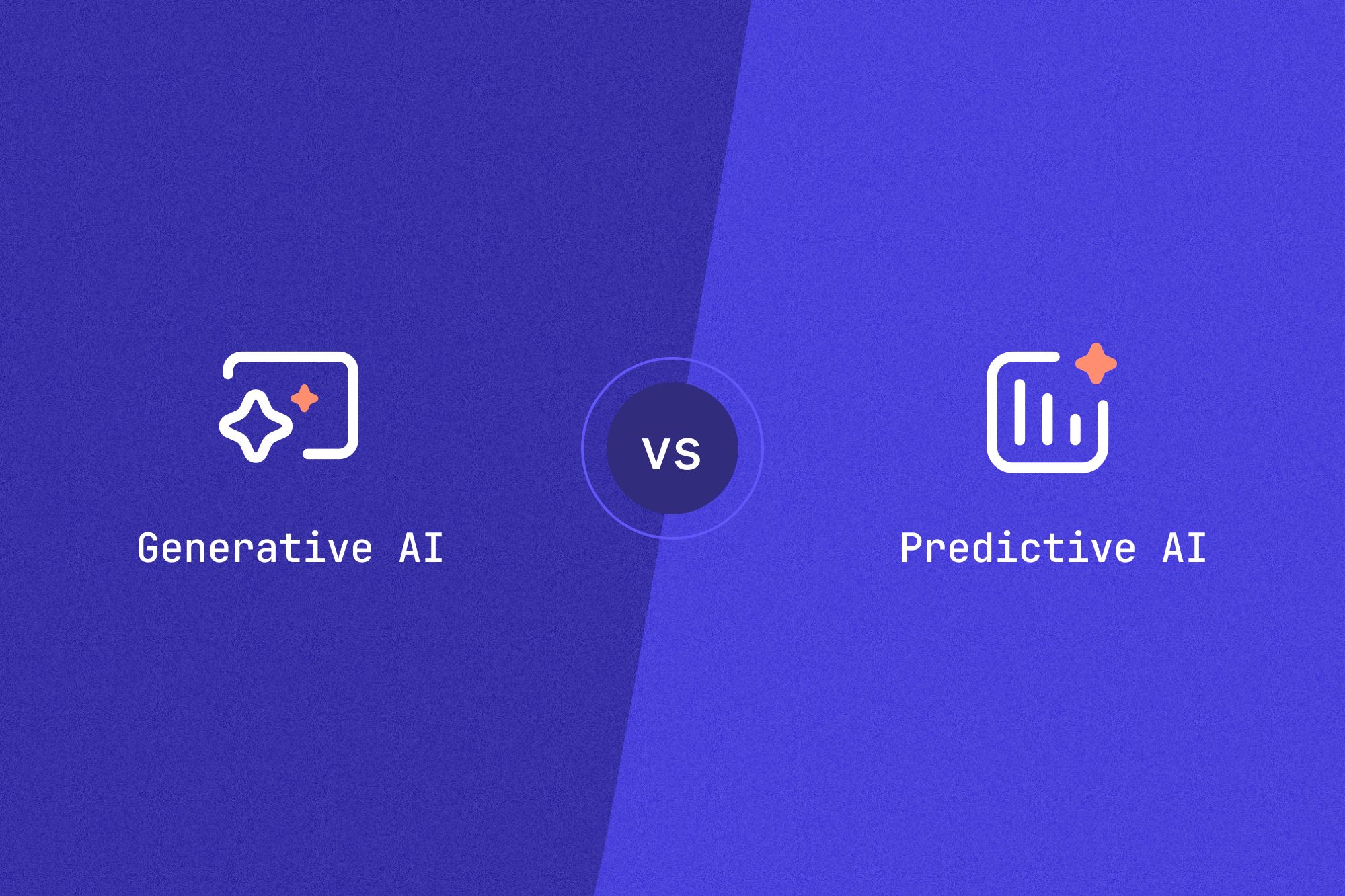
Artificial intelligence is an exciting field, and two of its most exciting branches--Generative AI and Predictive AI--are making waves across industries. To fully grasp their impacts, however, we need a better understanding of their individual functions; similar to how comparing an artist and fortune teller are different forms of creativity; each brings something special yet serves different functions in our lives. Let's explore these differences, compare real-world examples & uncover how both forms can drive innovation!
Generative AI can be thought of as an artificial creative powerhouse. Imagine an artist listening to thousands of songs, learning the patterns in lyrics, melodies, and rhythms, and then creating entirely new music. Generative AI does just this but with text, images, videos, or even realistic human faces as output based on what it has learned over time. Generative AI exists solely to generate something entirely new with what has already been discovered through learning processes.
OpenAI's ChatGPT, for example, produces text that sounds original based on its deep understanding of language patterns—not simply copy-pasting anything together or patching things together; its sentences flow naturally. Or take DALL-E, another AI which creates images from text descriptions: tell it to create an image resembling "medieval castle at sunrise with dragon," and it will produce one even though this particular picture doesn't exist in real life!
Businesses across sectors are already tapping Generative AI's creative potential. Fashion designers use Generative AI to devise novel styles combining classic looks with cutting-edge ideas; marketing teams employ AI to generate campaign concepts; while in healthcare Generative AI enables researchers to simulate molecules more rapidly to find new drugs faster.
Predictive AI is Generative AI's counterpart: instead of creating, Generative AI generates. Predictive AI forecasts instead—much like an experienced chess player can anticipate future moves by watching many games over time—or an expert AI algorithm using historical data patterns can use Predictive AI's predictions of outcomes to make accurate forecasts about future outcomes.
Real-life examples of Predictive AI include your streaming service suggesting shows you'll likely like, retailers using it to forecast customer demand, healthcare providers assessing risk for certain health conditions using it, as well as recognizing patterns to predict what's coming next based on prediction models & using these estimates as part of their decision-making processes.
Predictive AI has immense potential. Imagine financial institutions using it to analyze trends in the stock market, helping investors make smarter investment decisions. Or logistics companies using Predictive AI to anticipate demand for specific routes thereby optimizing fleet usage for reduced fuel costs & delivery times.
Now that we understand their basic differences, let's dive deeper. Simply put, Generative AI focuses on what could happen; creating content based on learned patterns. Meanwhile, Predictive AI provides us a glimpse into future events by looking backward at historical data. One is building new things while one gives us a look into future events.
Technically speaking, Generative AI models such as GANs (Generative Adversarial Networks) use training data to produce output that's similar in style or structure to what was provided, while Predictive AI relies on algorithms like linear regression or neural networks that sift through it to make predictions—thus becoming creators rather than forecasters.
When selecting an artificial intelligence approach for their company, Generative or Predictive? it depends on their goals. If innovation, design or inspiring new ideas is desired then Generative AI would be appropriate; but for making calculated decisions or anticipating trends, then Predictive AI might be more suited.
Consider the automotive industry for instance. Generative AI can assist car designers by blending aerodynamics and aesthetic appeal, leading to the creation of concepts not possible through traditional processes alone. Predictive AI would then analyze driving data and predict when parts may need maintenance in order to keep vehicles reliable over time.
Decision makers see AIs as invaluable assets that go far beyond isolated use cases. Generative AI helps enable rapid innovation by shortening ideation and prototyping time. Predictive AI helps strengthen strategic planning by mitigating uncertainties; imagine a retailer using Generative AI to design products based on emerging styles while Predictive AI gauges consumer demand for them. This combination aids companies both innovating new ideas while staying ahead of customer needs.
Generative AI and Predictive AI Are Compliments, not Rivals. While Generative AI and Predictive AI excel in different areas, they do not compete directly against one another; in fact, when combined together, their combined power can unlock untold possibilities. Consider healthcare: Generative AI could design tailored treatment plans based on each patient's specific characteristics while Predictive AI monitors recovery to identify any issues before they escalate further.
Collaboration with AIs isn't limited to healthcare alone; entertainment industries also benefit from these AIs' collaborations. Predictive AI can analyze viewer data to predict which movie genres might become popular next year, while Generative AI creates scripts, trailers or even digital artwork tailored specifically for these tastes. Together, these AIs are creating a future where creativity meets precision & strategic foresight ensures new ideas flourish successfully.
As AI technology develops, understanding the strengths of both Generative AI & Predictive AI is becoming ever more essential to driving innovation. Generative AI pushes creativity limits while Predictive AI brings clarity in decision-making processes; when used together they enable companies to generate bold ideas & plan efficiently to turn those dreams into realities. AI's future lies beyond simply replicating human tasks—it will amplify them beyond imagination!
For those looking to specialize in this field, a generative AI training course can be a valuable step, teaching both the technical skills and strategic insights needed to make the most of this technology.
No matter your level of interest in AI, whether as an enthusiast, business leader, or simply curious individual - be mindful that Generative AI & Predictive AI are crucial partners for innovation across industries and horizons alike - their true potential remains unexplored yet one thing is evident: AI's future is both promising and inspiring!